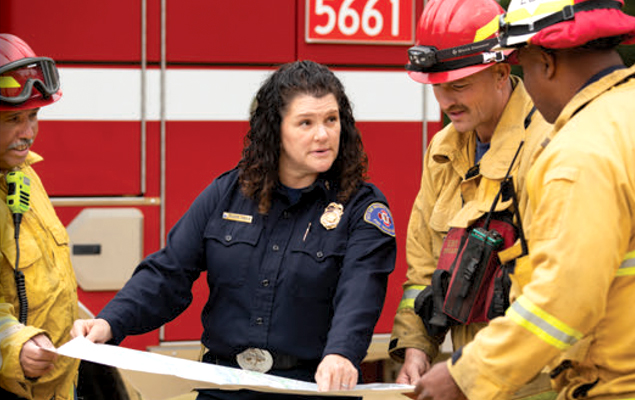
Your Role in the Season of Fires
Californians expect wildfires...but never in their wildest dreams did they expect this.
Extreme weather has set off a firestorm of blazes all across the state, engulfing land and property and singeing people’s nerves as thousands of residents flee their homes.
California goes up in smoke regularly due to fierce winds, fire-attracting grasses, native shrubs and trees, drought, people living closer to nature, more flammable homes and humans starting fires, sometimes intentionally. Under average conditions, studies show people cause up to 97 percent of the state’s fires, says Jennifer Balch, a University of Colorado fire scientist.
But Mother Nature had a major role in the current situation. CalFire reports that a rare occurrence of more than 11,000 lightning strikes on August 15 sparked 700 wildfires contributing to the more than 7,000 fires this year, which have burned 1.32 million acres. Many are largely uncontained though some progress is being made. Expect that the skies will remain darker, smoky and ashy for weeks to come.
“California’s Mediterranean climate is perfect firestorm weather worsened by climate change,” says Leroy Westerling, fire scientist at University of California, Merced. In recent years, his own home has been threatened more than once.
The fires have rapidly spread due to unusually hot, windy conditions and low humidity affecting the Sierra Nevada, Southern California and areas south, north and east of San Francisco. For the first time, the National Weather Service had to issue a firenado warning as a 30,000 foot spinning top of fire sizzled its way through Lassen County last week, before dying down from 143 mph winds.
“Some of these fires are feeding off of each other’s energy and growing even faster,” says Scott Stevens, a fire scientist at UC Berkeley. “It scares me how many people are in harm’s way.”
As extreme heat, imminent fire danger and poor air quality threaten the safety of citizens, The East Bay Regional Park District (EBRPD) had closed nearly all 73 regional parks. The parks were reopened on Aug. 27, except those directly impacted by the fires (including Round Valley, Morgan Territory, Del Valle, Ohlone Wilderness, Sunol, and Mission Peak).
Over 85,000 acres have burned in this region alone with a relatively low containment rate that is only now improving.
“Closing parks is always our last resort when safety of people, property or the environment cannot be maintained,” says Robert Doyle, General Manager, who stresses that EBRPD has kept parks open with restrictions since the beginning of COVID, even when other agencies did not. “Parks are essential now more than ever.”
“We are aware of the mental health challenge when there are limited entertainment options for people,” says Anthony Ciaburro, Chief of Police-AGM Public Safety at East Bay Regional Park District.
“By getting out, being outdoors, the family is healthy at home –– less stress at home, not looking at TV, etc.”
The park district is constantly communicating to the public about fire safety.
“We want to them to know the restrictions before they arrive to the parks,” says Ciaburro. “We are constantly making sure they understand what’s happening in the parks before they come. We do all the outreach to educate people before they come to the parks, as we want to make sure they fulfill their experience in nature.”
Regarding fire safety, Ciaburro says that most part park visitors are really good, but some things need to be addressed.
“Sometimes people don’t realize that the situation is dangerous.”
What You Can Do at Home
As California is no stranger to fires, EBRPD has always played a critical role in fire prevention and safety by maintaining a 50+ member fire department, stations and equipment, monitoring weather, decreasing fuel loads, thinning excessive growth, monitoring effects on wildlife and birds and partnering with PG&E and EBMUD to provide aid including helicopters. They also offer specific guidelines to empower people to keep themselves and their communities safe.
EBRPD recommends residents create defensible space around their homes from removing dead and overgrown foliage, clearing debris from roofs and gutters, keeping branches ten feet from chimneys, roofs and other trees, keeping firewood and fuel tanks 30 feet away, not storing of items under a home and fire hardening homes by installing fire mesh over roofs, eaves and foundation vents.
Additional measures for reducing fuel include mowing grass before 10:00 a.m. to a maximum of 4 inches and never on hot, windy or red flag days, creating vertical and horizontal space between grass, shrubs and trees and planting fire resistant native plants.
Studies indicate the number of fire-fueling days have nearly doubled in California since the 1980’s.
“A year round fire-season is the ‘new normal,” says Aileen Thiele, EBRPD’s Fire Chief. “While our efforts to reduce the risk of severe wildfires are extensive, it’s the collective efforts of homeowners and neighbors that can have the greatest impact.”
